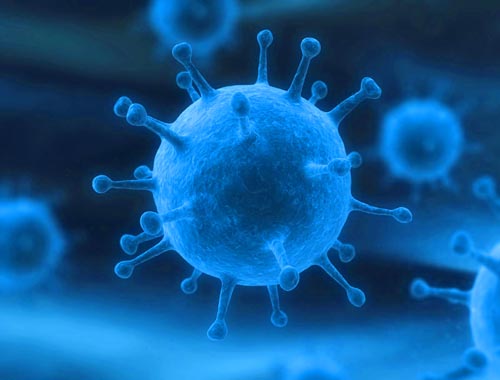Low and High limits of Lab tests laboratory
Published: 3 Nov 2024

Understanding Reference Ranges in Bloodwork Interpretation
When interpreting blood test results, understanding the reference ranges (limits indicating normalcy) is crucial for various tests. Below is a general overview of common lab tests and their typical reference ranges, albeit these may vary depending on the laboratory:
Complete Blood Count (CBC)
* White Blood Cells (WBC): 4,500-11,000 cells/mcL
* Red Blood Cells (RBC):
* Males: 4.7-6.1 million cells/mcL
* Females: 4.2-5.4 million cells/mcL
* Hemoglobin (Hgb):
* Males: 13.8-17.2 g/dL
* Females: 12.1-15.1 g/dL
* Hematocrit (Hct):
* Males: 40.7-50.3%
* Females: 36.1-44.3%
* Platelets: 150,000-450,000 platelets/mcL
Basic Metabolic Panel (BMP)
* Glucose: 70-99 mg/dL (fasting)
* Calcium: 8.5-10.2 mg/dL
* Sodium: 135-145 mEq/L
* Potassium: 3.5-5.0 mEq/L
* Bicarbonate (CO2): 23-30 mEq/L
* Chloride: 98-107 mEq/L
* Blood Urea Nitrogen (BUN): 7-20 mg/dL
* Creatinine:
* Males: 0.6-1.2 mg/dL
* Females: 0.5-1.1 mg/dL
Comprehensive Metabolic Panel (CMP)
Includes all BMP tests plus:
* Protein, Total: 6.0-8.3 g/dL
* Albumin: 3.5-5.0 g/dL
* Bilirubin, Total: 0.1-1.2 mg/dL
* Alkaline Phosphatase: 44-147 IU/L
* AST (SGOT): 10-40 IU/L
* ALT (SGPT): 7-56 IU/L
Lipid Panel
* Total Cholesterol: <200 mg/dL
* LDL Cholesterol: <100 mg/dL
* HDL Cholesterol:
* Males: ≥40 mg/dL
* Females: ≥50 mg/dL
* Triglycerides: <150 mg/dL
Thyroid Panel
* TSH: 0.4-4.0 mIU/L
* Free T4: 0.8-1.8 ng/dL
* Free T3: 2.3-4.2 pg/mL
Important Considerations:
* Always refer to the specific reference ranges provided by the laboratory, as they may vary depending on demographic factors, testing methods, and equipment used.
* Results outside the normal range can indicate potential health issues, but they should always be interpreted in conjunction with clinical context and discussed with a healthcare provider for further evaluation.
When interpreting blood test results, understanding the reference ranges (limits indicating normalcy) is crucial for various tests. Below is a general overview of common lab tests and their typical reference ranges, albeit these may vary depending on the laboratory:
Complete Blood Count (CBC)
* White Blood Cells (WBC): 4,500-11,000 cells/mcL
* Red Blood Cells (RBC):
* Males: 4.7-6.1 million cells/mcL
* Females: 4.2-5.4 million cells/mcL
* Hemoglobin (Hgb):
* Males: 13.8-17.2 g/dL
* Females: 12.1-15.1 g/dL
* Hematocrit (Hct):
* Males: 40.7-50.3%
* Females: 36.1-44.3%
* Platelets: 150,000-450,000 platelets/mcL
Basic Metabolic Panel (BMP)
* Glucose: 70-99 mg/dL (fasting)
* Calcium: 8.5-10.2 mg/dL
* Sodium: 135-145 mEq/L
* Potassium: 3.5-5.0 mEq/L
* Bicarbonate (CO2): 23-30 mEq/L
* Chloride: 98-107 mEq/L
* Blood Urea Nitrogen (BUN): 7-20 mg/dL
* Creatinine:
* Males: 0.6-1.2 mg/dL
* Females: 0.5-1.1 mg/dL
Comprehensive Metabolic Panel (CMP)
Includes all BMP tests plus:
* Protein, Total: 6.0-8.3 g/dL
* Albumin: 3.5-5.0 g/dL
* Bilirubin, Total: 0.1-1.2 mg/dL
* Alkaline Phosphatase: 44-147 IU/L
* AST (SGOT): 10-40 IU/L
* ALT (SGPT): 7-56 IU/L
Lipid Panel
* Total Cholesterol: <200 mg/dL
* LDL Cholesterol: <100 mg/dL
* HDL Cholesterol:
* Males: ≥40 mg/dL
* Females: ≥50 mg/dL
* Triglycerides: <150 mg/dL
Thyroid Panel
* TSH: 0.4-4.0 mIU/L
* Free T4: 0.8-1.8 ng/dL
* Free T3: 2.3-4.2 pg/mL
Important Considerations:
* Always refer to the specific reference ranges provided by the laboratory, as they may vary depending on demographic factors, testing methods, and equipment used.
* Results outside the normal range can indicate potential health issues, but they should always be interpreted in conjunction with clinical context and discussed with a healthcare provider for further evaluation.
